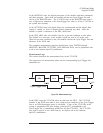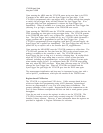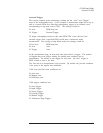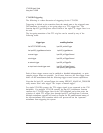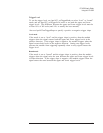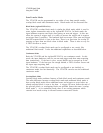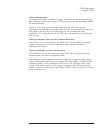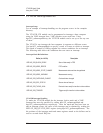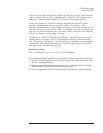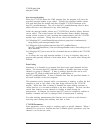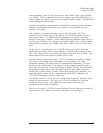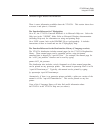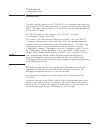
Once it has done this interrupt, the module will not do any more VME interrupts
until re-enabled with hpe1432_reenableInterrupt. Normally, the last thing a host
computer’s interrupt handler should do is call hpe1432_reenableInterrupt.
Events that would have caused an interrupt, but which are blocked because
hpe1432_reenableInterrupt has not yet been called, will be saved. After
hpe1432_reenableInterrupt is called, these saved events will cause an interrupt, so
that there is no way for the host to “miss” an interrupt. However, the module will
only do one VME interrupt for all of the saved events, so that the host computer
will not get flooded with too many interrupts.
For things like “HPE1432_IRQ_BLOCK_READY”, which are not events but are
actually states, the module will do an interrupt after hpe1432_reenableInterrupt
only if the state is still present. This allows the host computer’s interrupt handler
to potentially read multiple scans from a VT1433B module and not get flooded
with block ready interrupts after the fact.
Host Interrupt Setup
This is a summary of how to set up a VT1433B interrupt:
q
Look at the Resource Manager to find out which VME interrupt lines are available.
q
Tell the VT1433B module to use the a VME interrupt line found in step one, using
hpe1432_setInterruptPriority.
q Set up an interrupt handler routine, using hpe1432_callBackInstall. The interrupt
handler routine will get called when the interrupt occurs.
q
Set up interrupt mask in the VT1433B module, using hpe1432_setInterruptMask.
VT1433B User's Guide
Using the VT1433B
3-35



